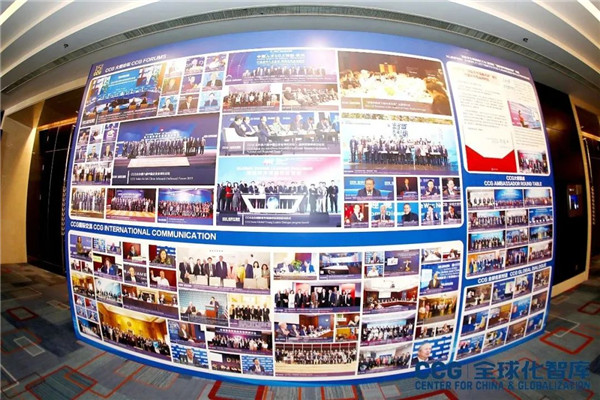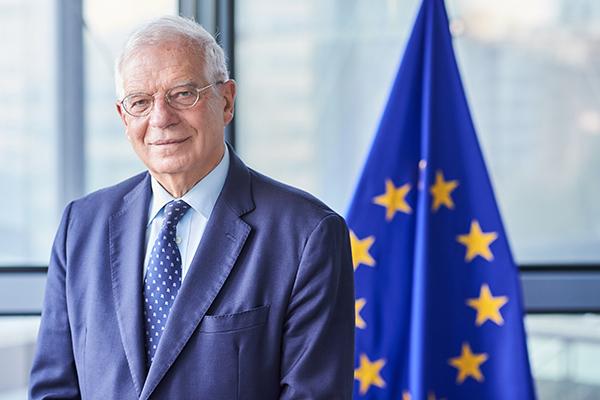Wang Huiyao: As Trump’s trade war gathers steam, China and Europe must cooperate
February 14 , 2025From SCMP, 2025-2-14
■ By fostering innovation and open markets – particularly in the automotive sector – China and the EU can show how major powers can work together despite differences.
By Wang Huiyao | Founder of the Center for China and Globalization(CCG)
Global trade tensions have escalated sharply in recent weeks after US President Donald Trump launched a series of aggressive tariff measures. While maintaining elevated tariffs on Chinese imports, Trump has now threatened to extend similar protectionist measures to the European Union, raising alarm bells across the Atlantic.
These mounting pressures have prompted European leaders to re-evaluate their strategic partnerships and trade relationships, particularly with China. Against this backdrop of mounting uncertainty, European Commission President Ursula von der Leyen’s speech at the EU Ambassadors Conference on February 4 took on particular significance.
“Our relationship with China is one of the most intricate and important anywhere in the world,” she said, highlighting that China accounts for 9 per cent of EU goods exports and more than 20 per cent of goods imports in a “mutually beneficial” trade relationship. Her words appeared to mark a departure from her previous hawkish stance as she emphasised that agreements could “even expand our trade and investment ties”.
Beijing quickly signalled its interest in strengthening ties. “The world is facing the risk of division, fragmentation and disorder,” Foreign Ministry spokesperson Lin Jian said a day later, adding that “China-EU relations have all the more strategic importance and global influence.”
Before these statements, EU-China trade relations faced significant challenges. The French cognac industry serves as a telling example. According to data from the Bureau National Interprofessionnel du Cognac, French cognac exports to China dropped 23.8 per cent by value and 9.6 per cent by volume last year from 2023 levels.
The relationship deteriorated sharply after China’s new tariff measures took effect last October 11 in response to EU duties on Chinese electric vehicles (EVs), with industry sources reporting a 75 per cent decline in French cognac exports to China in December. These figures highlight some of the pressing issues in bilateral trade relations that need to be addressed.
Against this backdrop, the European Commission launched a strategic dialogue on the future of Europe’s automotive sector. The industry, which supports more than 13 million direct and indirect jobs and contributes about €1 trillion (US$1.03 trillion) to EU gross domestic product, is now positioned at the forefront of potential EU-China cooperation in what von der Leyen described as “an era of hyper-competitive and hyper-transactional geopolitics”.
The European automotive sector faces unprecedented transformation pressures. It must simultaneously navigate a clean energy transition, supply-chain restructuring and technological innovation, a triple challenge that creates strategic opportunities for EU-China cooperation. China’s EV supply chain and manufacturing ecosystem could complement Europe’s advanced manufacturing capabilities and cutting-edge technologies, creating a powerful synergy in the global race for automotive innovation.
This strategic pivot has gained backing from global trade leaders. Former World Trade Organization director general Pascal Lamy recently proposed the idea of EU-China automotive collaboration, suggesting a reversal of traditional investment flows.
Speaking at a forum organised by the Centre for China and Globalisation, Lamy highlighted how the dynamics that brought European carmakers to China three decades ago could now work in reverse, with Europe potentially benefiting from Chinese investment and technological expertise.
This vision promises deeper collaboration extending to broader markets. Chinese manufacturers could establish production bases in Europe, creating jobs and fostering technological exchange, while both parties could jointly develop markets across the Global South. Such collaboration could accelerate the adoption of sustainable transport options in Africa, Latin America and Central Asia, creating a win-win scenario for the European and Chinese automotive industries.
Previous Chinese-European automotive partnerships have demonstrated the value and potential of such cooperation. Geely’s 2010 acquisition of Volvo from Ford has proven particularly instructive. The two companies now share electric vehicle architecture and jointly develop EV platforms while maintaining their distinct brand identities and operational independence.
European carmakers have similarly benefited from their long-standing presence in China. Volkswagen Group, through its joint ventures, has maintained market leadership in China while creating substantial local employment. BMW has followed a similar path of success.
These partnerships show how strategic collaboration can help both sides navigate the industry’s transformation: European firms gain market access and manufacturing scale while Chinese companies acquire advanced technology and production expertise.
Today, the spirit of cooperation is taking concrete forms as Chinese carmakers contribute to Europe’s automotive ecosystem. BYD is establishing a battery production facility in Hungary, adding to the region’s EV manufacturing capacity, while CATL, a global leader in battery technology, is developing multiple major projects across Germany, Hungary and Spain.
These investments show how manufacturing synergies can move in both directions, following the successful model of European carmakers in China but adapted for today’s evolving automotive landscape.
Making this vision a reality requires concrete action from both sides. The EU and China should revive negotiations on the Comprehensive Agreement on Investment, which would provide crucial institutional safeguards for businesses.
The automotive sector could pioneer new forms of industrial collaboration through joint research and development facilities, shared talent development programmes and harmonised technical standards. As two of the world’s largest automotive markets, they also have a shared responsibility to champion open trade and resist protectionist pressures in the global marketplace.
In an era defined by geopolitical tensions and economic uncertainties, the strategic significance of the EU-China relationship extends far beyond bilateral interests to its economic potential and capacity to shape a more balanced and resilient global order.
By fostering innovation, promoting sustainable development and maintaining open markets, the EU and China can set an example of how major powers can work together despite their differences.
From SCMP, 2025-2-14
Topical News See more






